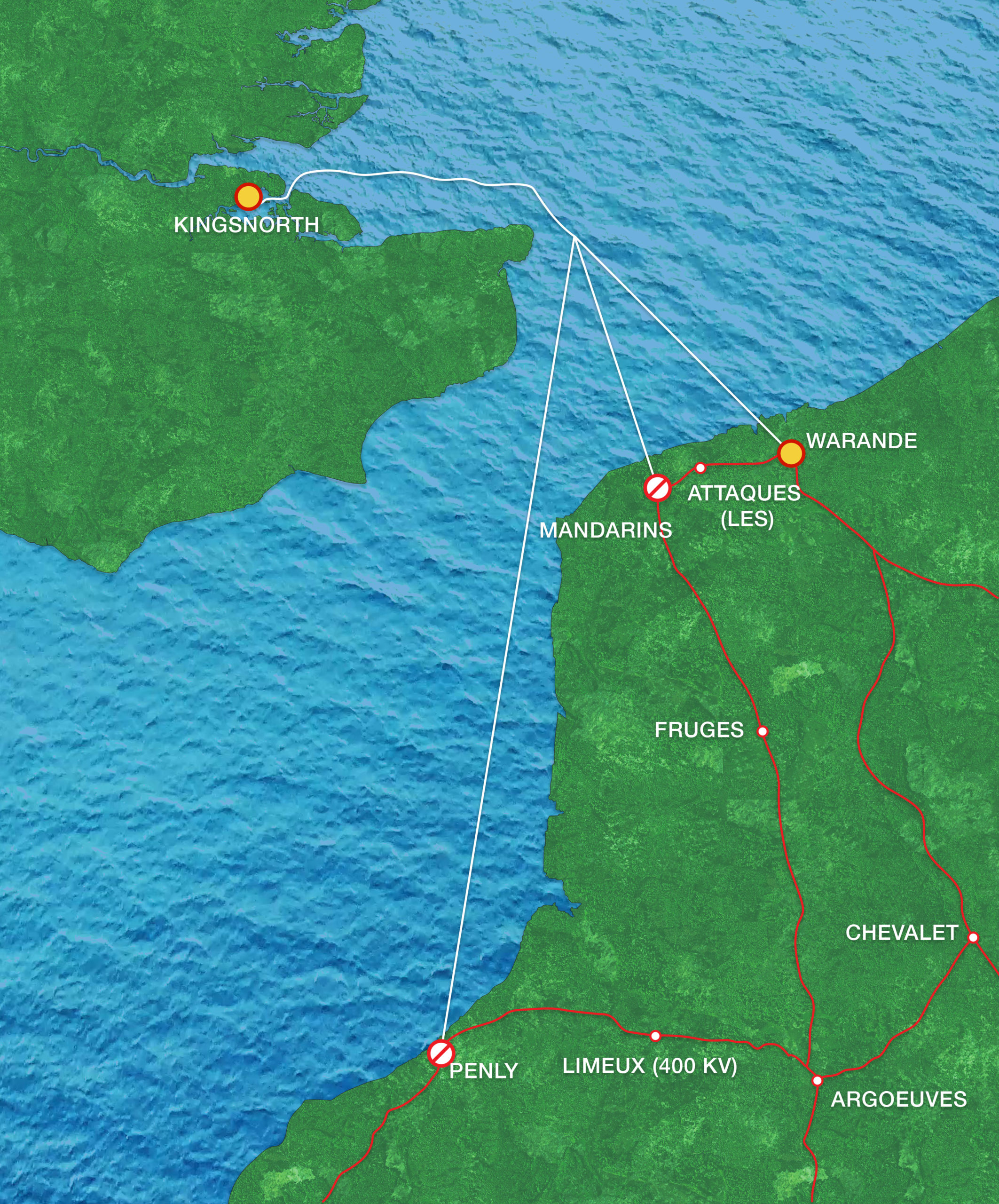The NEED FOR INTERCONNECTORS
Interconnectors are part of how the European energy market moves to a sustainable future and GridLink will contribute to the transformation.
The market’s many challenges relate to meeting environmental targets while overcoming the aging of existing infrastructure. Meeting these challenges requires both greater use of renewable energy and an improved transmission network to distribute energy and ensure security of supply.
PROJECTS OF COMMON INTEREST
From 2017 to 2021, the European Commission awarded GridLink the status of Project of Common Interest (PCI). This status recognised the project’s key contribution to realising Europe-wide goals related to energy policy and climate change.
Please use the link below for information on Projects of Common Interest:
INFORMATION LEAFLET
GridLink intends to positively engage with all stakeholders throughout the development phase, construction works and during operation of the interconnector. We have prepared this information leaflet as a short introduction to the overall project.
For more detailed information, please see our Non-Technical Summary and Environmental Impact Assessment.
Please find a link to the Information Leaflet below:
NON-TECHNICAL SUMMARY
Please find a link to the Non-Technical Summary below:
For more detailed information on environmental issues, please see our Environmental Impact Assessment.
Design of the Converter Stations and Cables
We have designed the interconnector to the highest industry standards and to deliver optimal efficiency and reliability. The design also takes into account ways to minimise environmental impacts during construction and operations by ‘building-in’ best practices and mitigation measures from an early stage.

UK GRID CONNECTION
GridLink carried out a study of the network constraints in the UK with National Grid Electricity Transmission (NGET).
FRANCE GRID CONNECTION
GridLink carried out a study of the network constraints in France with réseau de transport d'électricité (RTE).

environmental impact assessment
GridLink’s impact on the environment is one of our primary concerns and we have taken environmental issues and constraints into account from the start of the project.
- Avoid, wherever practicable, negative effects on the environment;
- Reduce any negative effects that cannot be avoided as much as reasonably practicable;
- Compensate for any potentially significant residual effects.
PERMIT APPLICATIONS
Building and operating the new GridLink interconnector requires a number of permissions, authorisations and licenses (together known as “permits”) from regulatory authorities in the UK and France.
The main permits that are required in the UK are:
| Permit | Applicable Legislation | Competent Authority |
| License to use seabed | Crown Estate Act 1961 | Crown Estate |
| Planning Permission | Town and Country Planning Act 1990 | Medway Council |
| Marine Licence | Marine and Coastal Access Act 2009 | Marine Management Organisation |
| Environmental Permit for flood risk activities | Environmental Permitting (England and Wales) Regulations 2010 | Environment Agency |
| Land Drainage Consent | Land Drainage Act 1991, as amended | Lower Medway Internal Drainage Board |
| River Works License (Medway Estuary) | Medway Ports Act 1973 | Peel Ports |
| River Works License (Thames Estuary) | Port of London Act 1968 | Port of London Authority |
The main permits that are required in France are:
| Permit | Applicable Legislation | Competent Authority |
| Environmental authorisation / Unique authorisation, including the procedures required for the Water Laws, Protected Species and ESPOO Convention | Ordonnance n°2014-619 and Environment Code | Prefecture du Nord represented by Direction Départementale du Territoire et de la Mer (DDTM) |
| Maritime public area utilisation concession – Port of Dunkerque (DPM GPMD) | Public Property Code | Grand Port Maritime de Dunkerque (GPMD) |
| Maritime public area utilisation concession – territorial water (DPM TW) | Public Property Code | Prefecture du Nord Délégation à la Mer et au Littoral (DML) |
| Marine archaeological preventative convention | Heritage Code | Département des recherches archéologiques subaquatiques et sous-marines (DRASSM) |
| Archaeological preventative decision | Heritage Code | LDirection Régionale des Affaires Culturelles (DRAC) |
| Building permit | Town Planning Code | Ville de Loon Plage |
All applications for permits are submitted in accordance with applicable national laws and regulations.
The status of the permit applications in the UK are:
- License to use seabed – licence option approved by Crown Estate in July 2018
- Planning Permission – Outline Planning Permission approved by Medway Council in March 2021
- Marine Licence – licence approved by MMO in May 2022
- Environmental Permit for flood risk activities – permit approved by the Environment Agency in June 2021
- Land Drainage Consent – advised that consent is not required by Lower Medway Internal Drainage Board in July 2021
- River Works License (Medway Estuary) – application to be submitted prior to start of marine works
- River Works License (Thames Estuary) – application to be submitted prior to start of marine works
The development consents and permits granted in the UK can be downloaded using the links below:
The status of the permit applications in France are:
- Environmental authorisation – decree published by Prefecture du Nord in May 2023
- Maritime public area utilisation concession – Port of Dunkerque (DPM GPMD) – concession awarded by GPMD in October 2023
- Maritime public area utilisation concession – territorial water (DPM TW) – concession awarded by the Prefecture du Nord in June 2023
- Marine archaeological preventative convention – convention completed with DRASSM in February 2021
- Archaeological preventative decision – decision received from DRAC in March 2021
- Building permit – application to be submitted in 2026
The development consents and permits granted in France can be downloaded using the links below:
